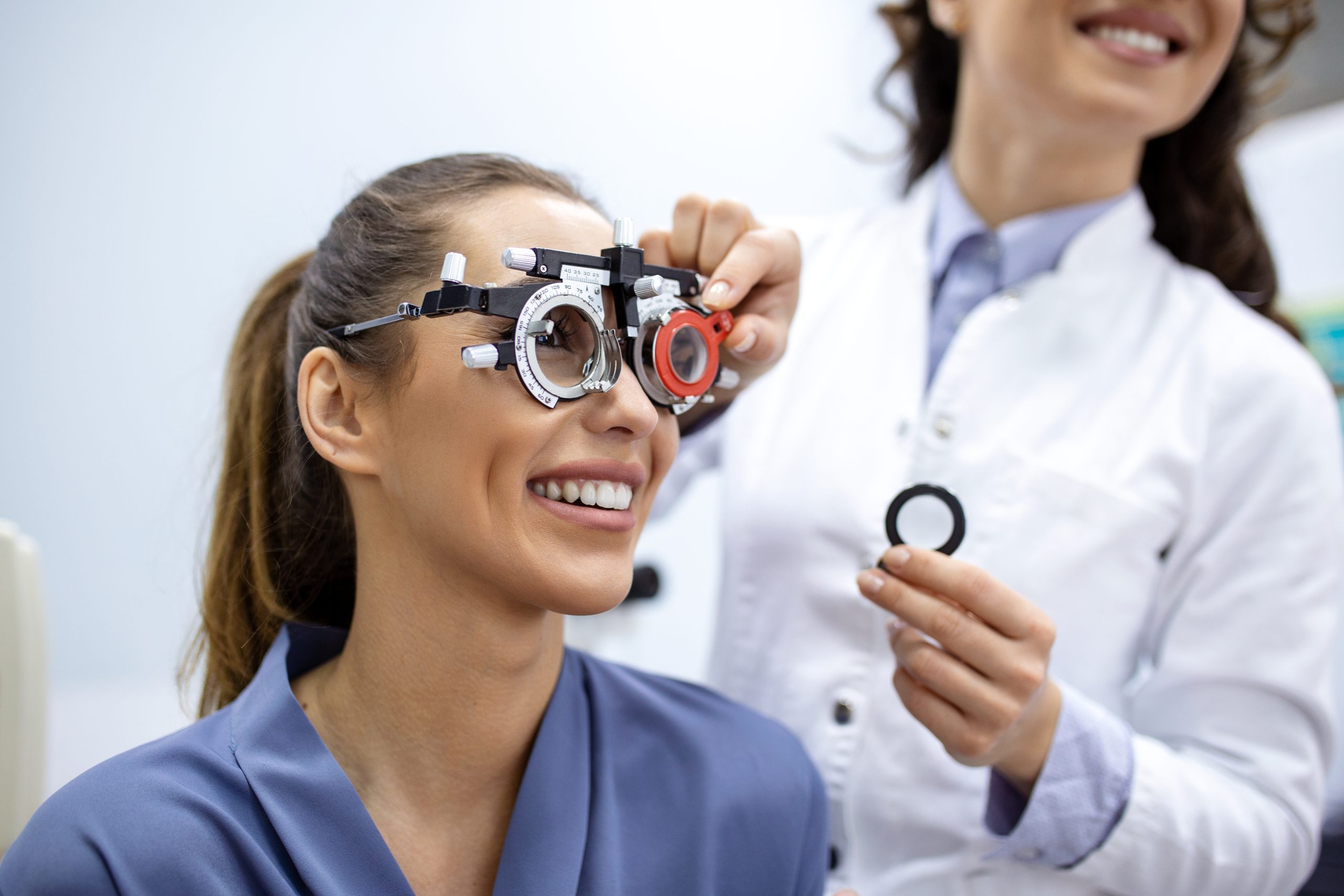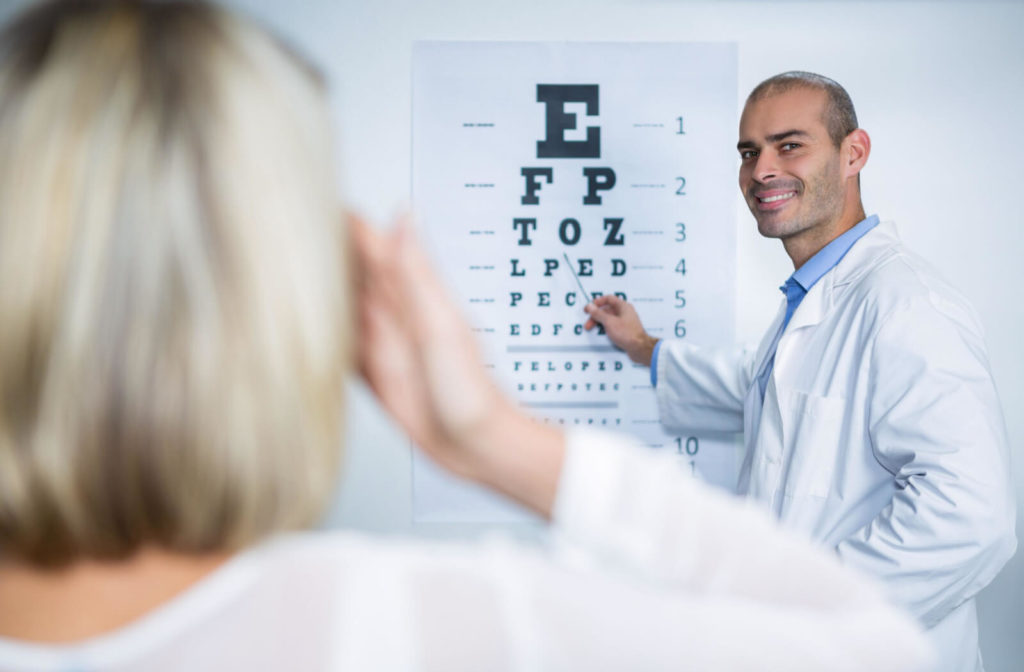Why Selecting an Eye Doctor Optometrist is Vital for Your Eyes
Why Selecting an Eye Doctor Optometrist is Vital for Your Eyes
Blog Article
Exploring the most recent Technical Improvements in Optometry and What They Mean for Optometrists
In the ever-evolving field of optometry, current technological innovations are reshaping just how professionals approach eye treatment. From the precision of Optical Comprehensibility Tomography to the nuanced insights supplied by AI-driven diagnostic devices, these developments are establishing brand-new criteria in individual assessment and therapy. Teleoptometry is poised to redefine access, making sure that know-how transcends geographical restrictions. As these improvements penetrate the method, eye doctors are encountered with the difficulty of welcoming these tools to enhance person outcomes. Yet, the inquiry remains: exactly how will these technical shifts redefine the roles and duties within the career?
Developments in Diagnostic Equipment
Progressing the area of optometry, innovations in diagnostic devices have revolutionized the way eye care professionals examine and detect ocular conditions and aesthetic disabilities. The previous years has actually observed substantial technical advancements, making it possible for even more exact and thorough analyses. Optical Comprehensibility Tomography (OCT), for instance, supplies high-resolution cross-sectional photos of the retina, allowing for the early discovery of conditions such as glaucoma and age-related macular deterioration. This non-invasive imaging method has become essential in contemporary optometric practice.
Another secret innovation is the intro of innovative corneal topography systems, which map the surface area curvature of the cornea with precision. These devices are particularly useful for suitable call lenses and identifying corneal conditions. Digital retinal imaging has actually transformed conventional ophthalmoscopy, offering comprehensive, panoramic views of the retina that help with detailed aesthetic exams.
The growth of wavefront aberrometry has actually also been vital, enabling the evaluation of refractive errors with unparalleled precision (Optometrist Chino). This modern technology helps in customizing rehabilitative lenses and boosting medical results for refractive surgical procedures. Jointly, these diagnostic developments equip optometrists to supply superior patient care, making certain early intervention and customized treatment techniques, ultimately boosting visual health end results
AI in Patient Administration
Structure on the structure of sophisticated diagnostic devices, the unification of fabricated knowledge (AI) in person administration stands for a transformative jump for optometry. AI systems are significantly used to boost performance, precision, and customization in client treatment.
Moreover, AI-driven platforms help with structured person communications and management procedures. Automated scheduling, virtual examinations, and personalized follow-up strategies not just improve patient contentment but likewise enhance time monitoring for professionals. These systems can triage clients based on the urgency of their problems, making sure that those in crucial requirement obtain prompt focus.
Additionally, AI improves decision-making by providing optometrists with evidence-based recommendations and treatment paths. By integrating information from digital health and wellness documents, AI devices offer understandings that educate medical decisions, minimizing the risk of errors and enhancing patient outcomes. As AI remains to develop, its role in client monitoring will likely increase, reshaping the landscape of optometric treatment.
Advancements in Retinal Imaging
In the world of optometry, retinal imaging has actually observed amazing technical advancements that are enhancing diagnostic capacities and person care. Technologies such as Optical Coherence Tomography (OCT) and fundus photography have actually changed just how eye doctors visualize and evaluate the retina.
Boosted imaging techniques like OCT angiography are additional refining analysis precision. This non-invasive method maps blood flow in the retina, supplying vital understandings into vascular health without the demand for color injections. Furthermore, adaptive optics technology is being integrated right into retinal imaging systems to correct eye aberrations, providing extraordinary image quality. Such improvements promote the recognition of minute retinal modifications that might indicate illness progression.
Furthermore, innovations in fabricated intelligence are increasing retinal imaging by making it possible for automated analysis of huge datasets. These systems help eye doctors in determining patterns indicative of pathology, therefore improving analysis precision and efficiency. Jointly, this website these developments are transforming retinal imaging right into a keystone of modern-day eye care, boosting results and broadening therapeutic possibilities.
Teleoptometry's Growing Role
Teleoptometry is progressively coming to be a vital part of eye care, driven by developments in electronic communication and diagnostic devices. As optometry embraces electronic change, teleoptometry helps with remote consultations, enabling eye doctors to prolong their services past typical limits. This is particularly helpful in rural and underserved locations where access to specialized eye care is often minimal. By leveraging high-resolution video clip conferencing and advanced retinal imaging, eye doctors can conduct thorough eye examinations from afar, guaranteeing timely diagnosis and therapy.
The assimilation of expert system (AI) more you can look here enhances teleoptometry, enabling the evaluation of visual data and assisting in the detection of ocular problems such as glaucoma and diabetic retinopathy. AI-powered algorithms can swiftly analyze complex imaging data, giving eye doctors with valuable understandings that strengthen professional decision-making.
In addition, teleoptometry sustains connection of treatment via seamless integration with electronic health and wellness documents (EHRs), allowing optometrists to preserve thorough person backgrounds. This ensures that clients obtain constant and tailored care even when speaking with different specialists.
Despite these benefits, difficulties stay, consisting of making sure data safety and security and taking care of client assumptions. However, teleoptometry stands for a considerable stride in the direction of even more available, efficient, and patient-centered eye treatment. As technology evolves, its duty is poised to broaden even more.

Future Patterns in Eye Care
A myriad of cutting-edge patterns is readied to improve the future of eye treatment, driven by weblink technological developments and the evolving requirements of people. One substantial fad is the combination of expert system (AI) in diagnostics, which promises to enhance the precision and effectiveness of eye assessments. AI algorithms can evaluate vast quantities of data from retinal images, potentially spotting conditions like diabetic retinopathy and glaucoma earlier than typical techniques.
In addition, tailored medication is acquiring grip in optometry, with genetic testing informing tailored treatment strategies. This technique aims to enhance patient outcomes by customizing interventions to specific hereditary accounts. Wearable technology, such as clever call lenses, is additionally imminent, supplying real-time monitoring of intraocular stress or glucose levels, therefore supplying continual understandings right into systemic and ocular wellness.
The adoption of increased reality (AR) and online fact (VIRTUAL REALITY) in training and patient education is one more emerging fad. These innovations offer immersive experiences that can enhance understanding and skills both for clients and eye doctors. As these trends advance, eye doctors need to stay abreast of technical advancements to provide advanced care, guaranteeing improved patient end results and fulfillment in the dynamic landscape of eye care.
Final Thought

Collectively, these analysis improvements empower optometrists to provide exceptional client care, guaranteeing very early intervention and tailored therapy strategies, eventually improving aesthetic health and wellness end results.

As these modern technologies continue to develop, optometrists should adapt and incorporate them right into technique, inevitably maximizing workflow performance and boosting the criterion of eye care provided to individuals.
Report this page